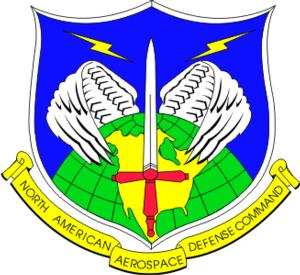Fri, May 30, 2014
Says Taxpayers Spend Millions On Intercept Flights, Infrastructure
NORAD says that it is going out to intercept pilots who have violated restricted airspace more than once per week, and it is costing the taxpayers millions of dollars.

The agency says that the number of incidents is down in recent years because of better outreach programs, but the current level is about what the agency expects into the foreseeable future.
Most intercepts are violations of TRFs, which can crop up on short notice. While more aircraft are being equipped with glass panels that will warn pilots of a TFR on their route of flight, obviously that technology is far from ubiquitous. Steven Armstrong, a NORAD official, said that many pilots are not aware of a TFR being posted, particularly when flying from uncontrolled airports on a flight that requires no flight plan. But showing what appears to be a lack of understanding about GA, he told the Associated Press "They just take off and do what they want."
Why yes ... yes they do.
Armstrong said that intercept flights cost between $10,000 and $20,000 to operate, and alert facilities are budgeted at about $7 million per year. The agency would not say how many alert facilities it currently operates, but at their post-9/11 peak, there were about 26 around the country.
Armstrong said that most pilots who are about to stray into restricted airspace get a warning over the radio, and that is usually enough to get them away from where the government has decided they don't need to be. The agency follows some 1,800 "tracks of interest" each year. He said that if a pilot does not respond to a radio call, the fighters are scrambled before they reach the restricted area if possible. Still, some don't respond to the sight of a jet rocking its wings near their airplane, and require an escort out of the area.
Those pilots are usually in for a session with local and federal law enforcement officials. While few face criminal charges, the FAA can take action up to the suspension of airman privileges.
More News
From 2023 (YouTube Version): Legacy of a Titan Robert (Bob) Anderson Hoover was a fighter pilot, test pilot, flight instructor, and air show superstar. More so, Bob Hoover was an i>[...]
Get The Latest in Aviation News NOW on Instagram Are you on Instagram yet? It's been around for a few years, quietly picking up traction mostly thanks to everybody's new obsession >[...]
Aero Linx: B-52H Stratofortress The B-52H Stratofortress is a long-range, heavy bomber that can perform a variety of missions. The bomber is capable of flying at high subsonic spee>[...]
Altimeter Setting The barometric pressure reading used to adjust a pressure altimeter for variations in existing atmospheric pressure or to the standard altimeter setting (29.92).>[...]
"Knowing that we play an active part in bettering people's lives is extremely rewarding. My team and I are very thankful for the opportunity to be here and to help in any way we ca>[...]
 Classic Aero-TV: Remembering Bob Hoover
Classic Aero-TV: Remembering Bob Hoover ANN FAQ: Follow Us On Instagram!
ANN FAQ: Follow Us On Instagram! ANN's Daily Aero-Linx (05.15.24)
ANN's Daily Aero-Linx (05.15.24) ANN's Daily Aero-Term (05.15.24):Altimeter Setting
ANN's Daily Aero-Term (05.15.24):Altimeter Setting Aero-News: Quote of the Day (05.16.24)
Aero-News: Quote of the Day (05.16.24)



